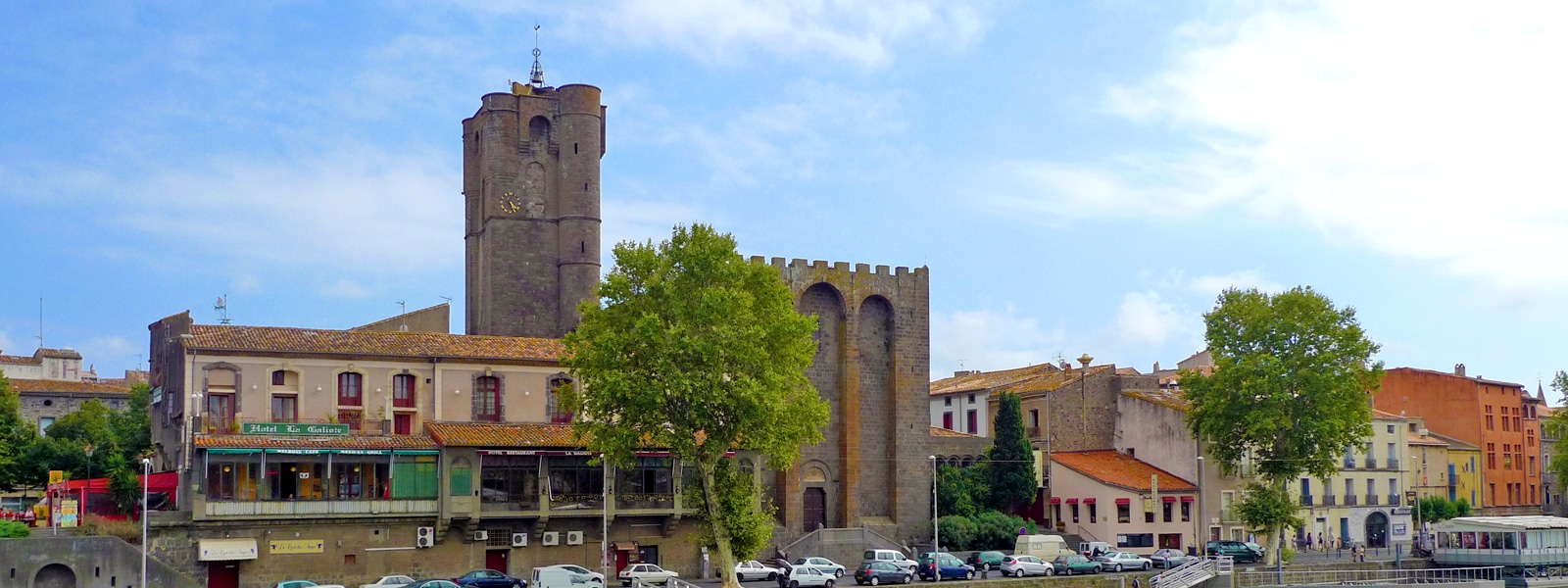A trip to Agde, only 10 minutes from our Hérault seaside campsite, will be the ideal opportunity to visit the Saint Etienne cathedral. This one is located on the Rue Hôtel du Cheval Blanc and as its name indicates, it is dedicated to Saint Etienne. Classified as a Historic Monument since 1840, this religious building made of volcanic stone is a great idea for a family visit. It was the seat of the bishopric of Agde, and is one of the most beautiful examples of fortified church in the region.
The Saint Etienne cathedral symbol of Agde and black pearl of the Hérault
The cathedral impresses by its proportions, its fortifications and its rather atypical construction, all in Black Volcanic Stone, hence its nickname “the black pearl of the Hérault”. This Romanesque building, built of basalt lava stone to which it owes its color, shares the architectural attributes of a church and a medieval fortress. Indeed, it was built on the foundations of an ancient Romanesque church of the 5th century and has preserved a rich archaeological heritage of its past. The stones were brought from Mount St. Loup during its construction. It was built in 872 and fortified in 1173 by Bishop William. Its walls of 2 to 3 meters thick and its square bell tower of 35 m give it an imposing look. The design of the bell tower in particular represents a true aesthetic and technical feat. It has all the characteristics of a medieval fortress thanks to this keep but also to its machicolations, crenels, loopholes and covered way.
Discover the interior of the Cathedral of Agde
The interior of the cathedral has undergone many changes, especially in the 15th and 17th centuries. The stained glass windows are one of the last additions to the church, having been installed in 1870. Many works of art can be seen there, including the painting representing the stoning of Saint Stephen. One enters by the small chapel Notre-Dame-de-Lourdes of the 19th century or by the door on the Hérault side. The polychrome marble altarpiece from the 17th century, the marble pulpit from the same century and the German Baroque organs, more recent (1990), are worth mentioning. To this day, this jewel of Romanesque architecture is one of the most spectacular buildings in the Hérault. The bishops of Agde and the privateer Claude Terrisse were buried there. The architectural style of the cathedral is similar to the style of churches, abbeys and Gothic monuments of the 12th century. It is classified as a historic monument by unesco for the architectural richness of its nave, chapels, altar, cloister, vault and abbey crypt of camargue. Vestiges of the Renaissance can be seen in the nearby alleys, as well as some similarities with the Notre Dame church and a certain parish basilica.
Photo by Jean-Louis Zimmermann

